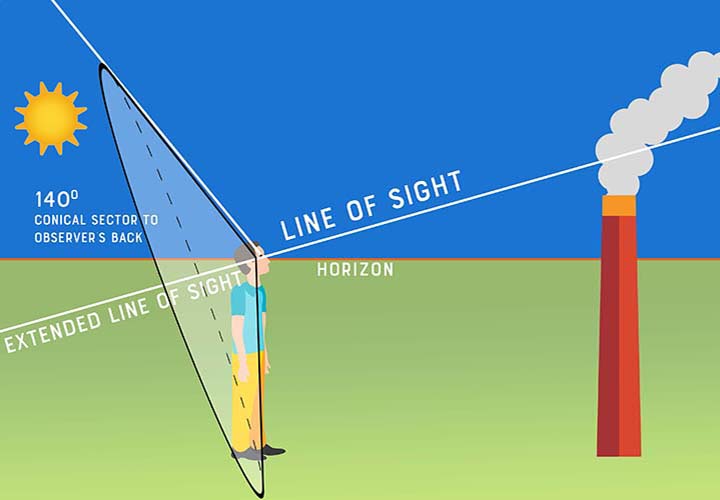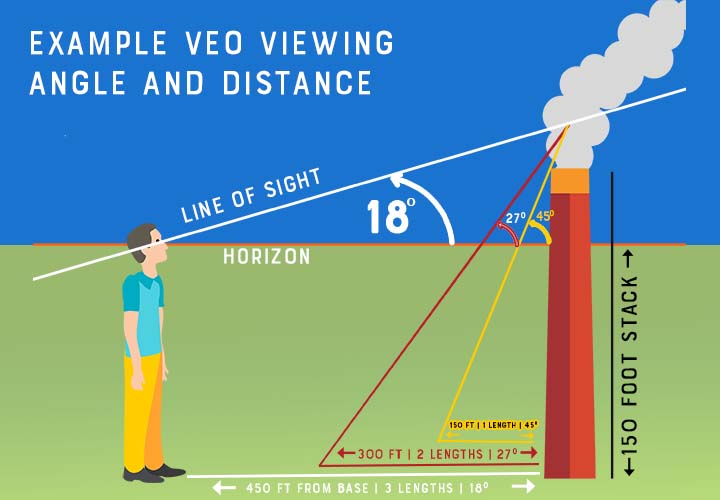Sun Position and Observer Position for Method 9
Excerpt from Online Visible Emissions Course
Return to VEO course summary page »

Sun Position
It is important to have the sun at your back when performing visible emission observations. Method 9 specifies that the sun must be oriented in a 140° sector to the observer's back. This includes both the vertical and horizontal sector, resulting in a 140° area shaped like a cone where the sun can reside.
If the sun is behind the plume (i.e., in front of you), the plume can become more luminous than the background and creates a high bias or positive error in your opacity reading. This is due to the effect from the forward scattering of light.
Forward Scattering of Light
Observer Position
The opacity reader should observe the following when performing observations:
- The observer should stand at a distance from the stack that is about three times the height of the stack.
- The observer's line of sight (LOS) shall be approximately perpendicular to the track of the plume. This places the observer in a position that causes them to look up from the horizon by about 18°.
There are several things to consider when determining the observer position; details are covered in the Performing Observations section.


